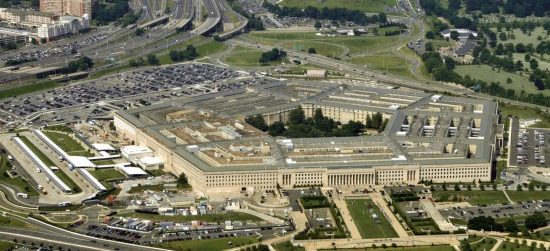As the largest single organization in the United States, the future of the Department of Defense (DoD) is critically important. Its annual budget of more that $500 billion helps fund a wide variety of projects and employs 3.2 million people. But DoD, just like any other federal agency, is facing an unsure future, thanks to the upcoming presidential election.
DoD is working on solutions for a number of challenges that it is certain to encounter in the years to come. To discuss the department’s efforts, Henry Sienkiewicz, CEO at Open Travel Software and author of the Amazon best seller Untangled, and Hannah Moss, Senior Editor and Project Manager at GovLoop joined Christopher Dorobek at this month’s DorobekINSIDER Live, What You Need to Know About DoD.
GovLoop’s recent guide “DoD in Transition” sought to capture the priorities of the Department but found it was challenging because of the possibility of coming changes. Department officials emphasized that the presidential transition makes the next year a complex one, but “there are four challenges they’ll have to face at DoD, no matter who takes office,” Moss said.
- Meet the department’s mission with fewer dollars and people.
Department budgets have been decreasing for a number of federal agencies, including DoD. At the same time, DoD is having a harder time filling jobs with qualified applicants as the benefits of stable government work are less competitive with the perks offered by private industry.
DoD does not have the power to increase its budget, so solutions have to center on doing more with a lot less, Moss explained. Part of the strategy should be hiring the most talented professionals available, even if they can only stay on for shorter periods of time. To accomplish this, Moss recommended that the department support sabbatical-like programs that allow private industry professionals to easily spend a few years in government, or to allow government employees to spend time in private companies.
According to Sienkiewicz, investment in strong technology may also draw more talented prospects. In particular, retiring legacy technology and shifting to cloud and more centralized infrastructure will demonstrate to possible applicants that they will join a thriving tech environment.
- Promote innovation and agility.
Introducing talented new faces will help spur innovation, but additional steps will be necessary to prepare for the future. Part of this challenge may involve adapting workplace culture to reward smart risk-taking.
Dorobek noted that it often seems that the leadership and frontline folks both understand the need to update old practices, but that the middle management may get in the way. But, the middle layer experiences pressures from leadership, budgetary restrictions and institutional needs. “In this political climate, it’s hard to persuade people that it’s in their best interests to change,” Sienkiewicz noted.
One way to lift these pressures is to give more room for risk and error. By reclassifying the ability to fail fast as a positive opportunity for growth and improvement, middle management will be more willing to permit risky innovation and entrepreneurship.
- Create new partnerships to increase collaboration.
Organizing joint efforts can be difficult. There are many agencies within DoD, and their goals and approaches are not always well matched. In fact, the lack of unity can be so extensive that central definitions for technology do not exist. Fortunately, DoD is already working to strengthen its collaboration both within the department and with other federal agencies.
Through the new partnerships, DoD is already benefiting from knowledge shared by other agencies. The Department of Homeland Security, for example, has been a useful partner in improving DoD operations. The emphasis on fluid and flexible interactions is also paying off outside government. Defense companies are beginning to share their best practices and insights with positive results.
These complex relationships will also benefit from diverse workplace hiring. By incorporating employees with a variety of backgrounds in both government work and the private sector, it will be much easier to build, maintain and benefit from these partnerships.
- Get ready for the realities of tomorrow.
Global warfare techniques are changing rapidly, and DoD needs to shift its priorities in order to keep up. Sienkiewicz explained that because of the relatively long life spans of land, naval and air warfare, the defense community has built up a substantial doctrine of best practices for fighting and training. In this respect, cyber warfare is still new.
Without doctrinal pieces to rely on, DoD is having a tough time training new hires on the right approaches. These difficulties are not limited to fresh faces in the industry. Current employees who are working to shift from conventional warfare to cyber warfare are facing similar challenges, despite their success in navigating the constraints of air, land and sea.
These challenges, and many others, are forcing the Department of Defense to adopt more innovative and flexible solutions. Implementing these changes will be difficult and may take a long time, but adapting to today’s obstacles will not be impossible. “This is a time of challenges and perils, but also opportunities for people in the DoD,” Sienkiewicz explained.
Still have questions? Listen to the full online training here, and download GovLoop’s recent guide “DoD in Transition.” Keep an eye out for future content as we track the department’s work to innovate and update.






Leave a Reply
You must be logged in to post a comment.